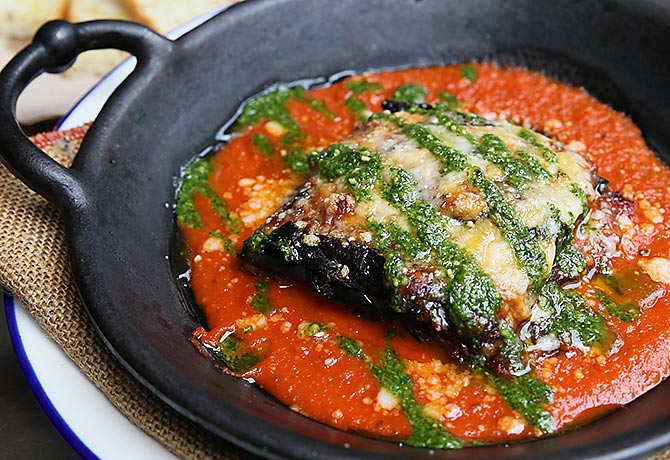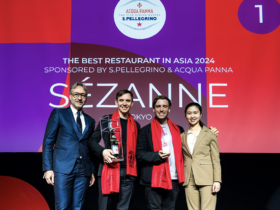A year after opening, Buttero has a new chef with Tuscan credentials serving up authentic Italian cowboy food – Frank Young rustles up a meal and relates the tale
[dropcap]T[/dropcap]uscany, the northern Italian region, has rich history dating back to the Etruscans, whose civilization predates the Roman Empire. It is also home to the Leaning Tower of Pisa and the thinkers of the renaissance such as Dante Alighieri, Michelangelo, Leonardo da Vinci, Galileo Galilei and Giacomo Puccini.
With the rich culture and history, you’d think that any association between the region and cowboys is erroneous. It’s not.
From Culture to Cattle
[su_pullquote align=”right”]When a region produces a bounty of quality ingredients such as the freshest fish, tasty produce, and great meats, an exceptional chef simply needs to get out of its way and let the ingredients speak for themselves![/su_pullquote]
To this day, Tuscan cowboys exist and are called “butteri” [plural]. These butteri are caretakers of Maremmana cattle, one of Europe’s oldest breeds, with intimidating horns as long as their heads.
Like the American cowboys, the butteri are equally rugged. From dawn to dusk, hot or cold, these hardened and weather-beaten butteri follow the herd on the trail.
Unlike their American counterparts, however, the butteri apparently eat much better food. Or at least Buttero, Singapore’s Tuscan restaurant at Tras Street, would have us believe.

Even Chefs Need Street Cred
Buttero’s new Chef, Antonio Massagli, a born-and-raised buttero from Lucca, Tuscany, says in his own words, “ [I] bring the diverse Tuscan landscape of my home country. Flavours from both the land and sea are celebrated at Buttero.”
“I try to highlight the lightness and natural flavours of the freshest produce in my cooking,” he adds.
Simple is Better
Simplicity is the hallmark of Tuscan cuisine. And why not? The Tuscan region has stretching shorelines for fresh fish and mountainous areas perfect for cattle.
The ebb and flow of harsh temperatures make for rugged people and extremely fertile soil worthy of great-tasting agriculture, and mineral-rich grass on which the cattle graze.
When a region produces a bounty of quality ingredients such as the freshest fish, tasty produce and great meat, an exceptional chef simply needs to get out of its way and let the ingredients speak for themselves!
Tuscan Frank and Beans
Buttero offers simple Tuscan fare unpretentiously served in skillets or pans that you’d use over a campfire. The Salsiccie e Fagioli (Pork Sausage with Cannellini Beans, $30) is one example. It’s the buttero version of the American “Frank and Beans”, though much better looking and tasting.
White Fagioli beans are mixed with small tomatoes, creating a tangy thick base. Together with this, a large sausage and some sliced, toasted bread is thrown on top, all in the pan. This is the type of comfort food that warms the heart,whether you’re in the CDB or on the ranch.
Though I loved the beans, the sausage was a bit bland. Chef Antonio says the original Tuscan sausages called for the addition of fennel seeds to give them a kick but, apparently, Singaporeans aren’t big on fennel so the recipe has been localised. Too bad — I think that’s what it needs!

Making Carpaccio with a Mallet
In most fine-dining Italian restaurants, carpaccio is sliced paper-thin. That may be fine for weight-conscious urbanites but back on the ranch the boys like their Carpaccio ($17) thick!
Hand-sliced raw beef — the thickness of a pad of butter — is beaten with a tenderising mallet until it’s as soft, but not as fatty, as wagyu. Slices of parmesan are tossed on top.
Unlike other carpaccios in town, this one isn’t beef-shy. It has the unmistakable richness of raw beef with a savoury cheese flavour.

Parmigiani and Burrata
The Parmigiani (Baked eggplant with tomato and Parmasan, $18) was tender, nicely-balanced with the tomato sauce, and had a dash of pesto. The Burrata (a cheese made from mozzarella and cream, $23) was topped with grounded truffle and drizzled with truffle oil, with a dash of thick balsamic vinegar on the side.
[su_row][su_column size=”3/3″]


[/su_column][/su_row]
Topping It Off with Tiramisu

For dessert, the Tiramisu ($12) is served in a petite mason jar, no bigger than a coffee mug, topped with a copious amount of chocolate chunks. It was a delightful take on the traditional dessert.
Overall, the food was impressive, and I’m looking forward to dining there again soon. For the best value go for the set lunch ($23), which includes soup of the day, salad, main dish, and espresso or lemon and mint iced tea.
By Frank Young
Buttero, 54 Tras Street, Tel: 6438-7737
ADVERTISEMENTS










Leave a Reply